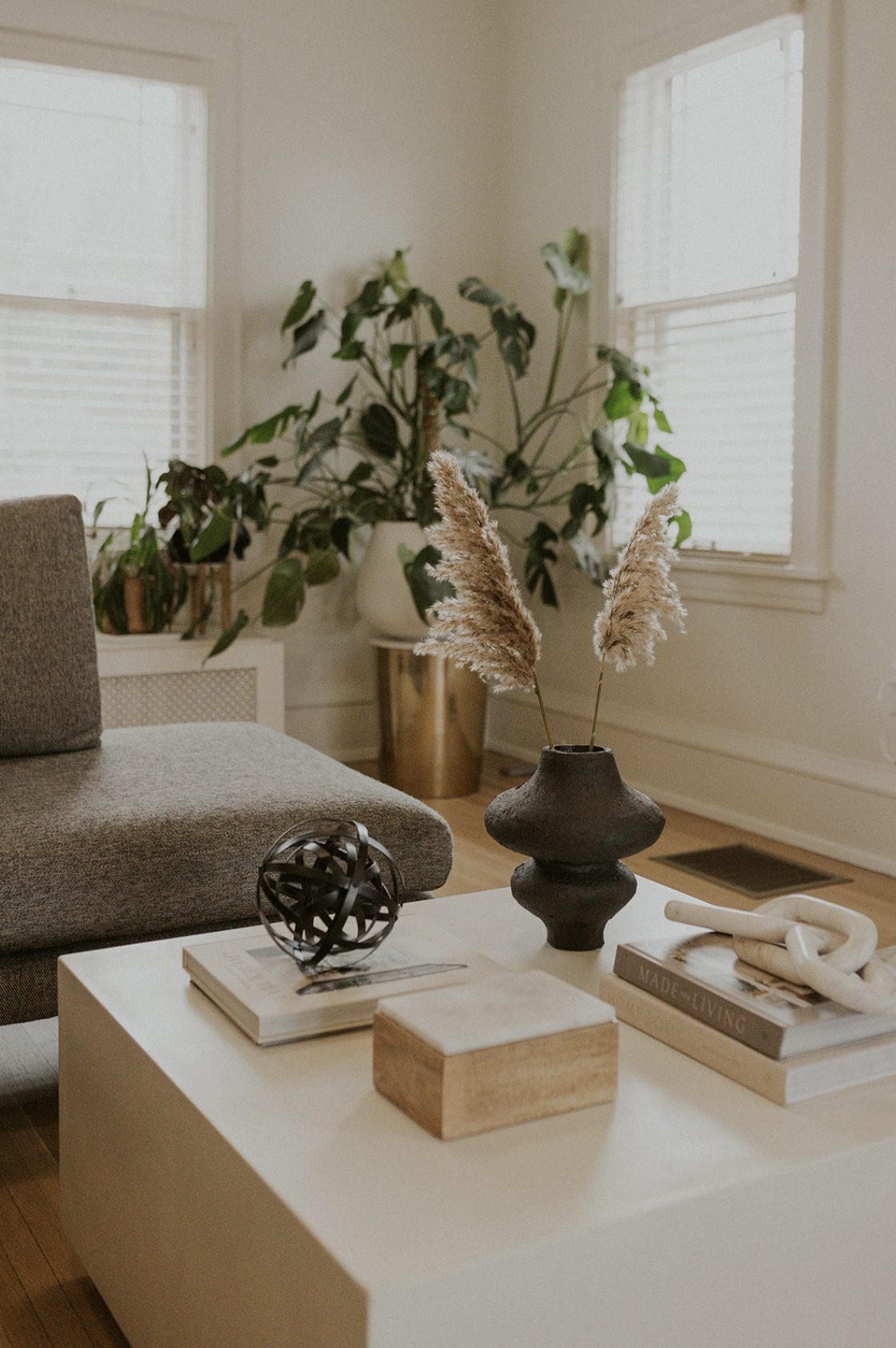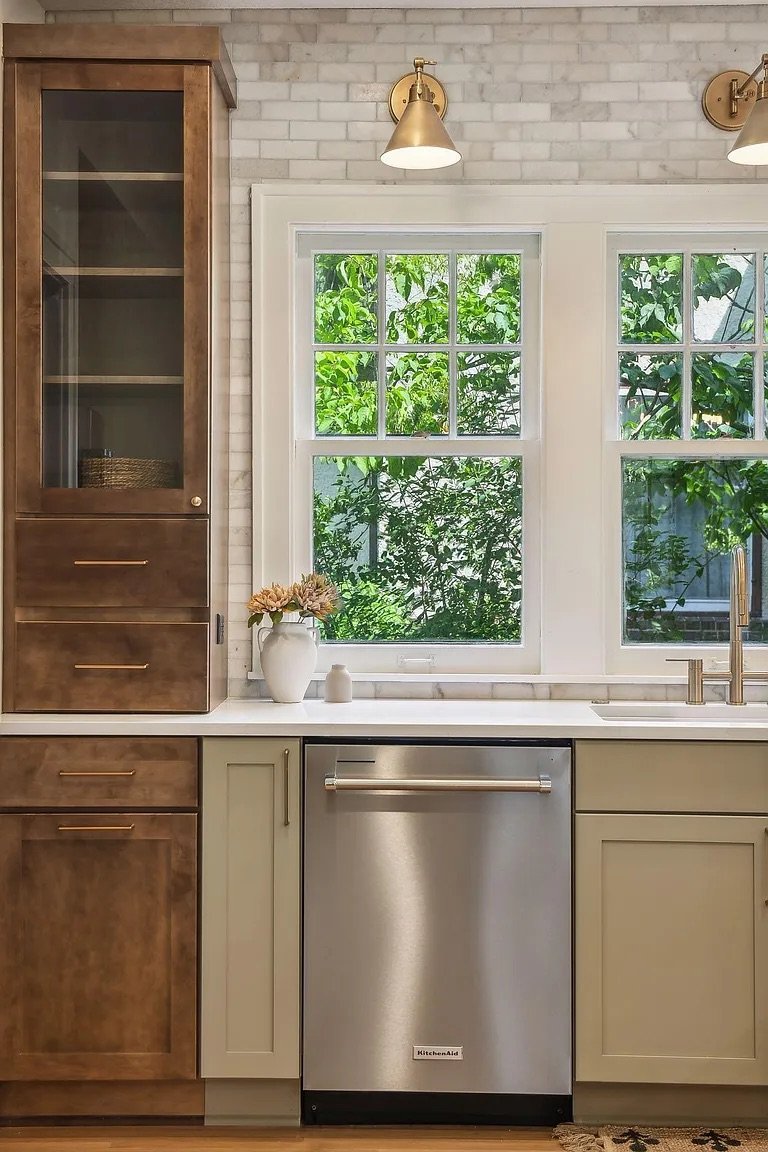The Right Time to Move: Save Money by Making Smart Investments
WHEN TO RENOVATE YOUR HOME & WHEN TO MOVE
When I purchased my first investment property, I was ready to conquer the world and build financial freedom. I had all of these goals about owning ten multi-family properties and living off the residual income that they cumulatively brought in by renting them out.
Fast forward 4 years later and instead of buying another duplex, I purchased a single family home. Not only did it take a lot longer to buy my second property, but it also wasn’t aligned with my original goals. Why you might ask? Well, I really wanted my own space and own backyard.
Living near tenants in my opinion was great. As a single female, I actually enjoyed knowing someone was near by in case of an emergency and I don’t need a ton of space. My two bedroom + den unit was plenty!
The internal battle for me was the desire to enjoy some privacy in my own backyard and take on robust home renovations. When you’re living in a rental, it’s always a good idea to make some cosmetic updates to visually entice potential tenants to want to live there and to pay a strong rent. However, you don’t want to “over invest” in renovations. The wear and tear in a rental is harder on the home. It’s not truly their home, so although they may be solid renters and take pretty good care of the property, they aren’t you and won’t be emotionally invested in the home. So, a friendly reminder if you are owner occupying or planning to renovate a rental…don’t over invest.
PULLING EQUITY OUT OF YOUR HOME
Now that I’ve bought my new home, I am now taking on massive renovations and am beginning to see the fruits of my labor, to put it lightly, I’m falling in love. However, unfortunately, I am constantly looking at each of my real estate investments as just that, an investment.
When you invest money into a home/property and build “equity” it only benefits you in two ways in my opinion. The first is that it helps gain a piece of joy and efficiency in the home that once didn’t exist. Something that you’ve truly wanted and were ready to invest in. The second is through the sale of your home. Any investment through a renovation, does not “actualize” until the sale of the home.
As a real estate investor, I believe a financial investment in a home is only truly beneficial if you’re going to pull that money back out of the home. Personally, sitting on equity does no good. So, until I sell my new house, or do a cash out refinance, I won’t see the money I invested or the equity I’ve built, which puts me at quite the crossroads when it comes to deciding what’s next for my real estate portfolio.
MY CURRENT AMOUNT BROKEN DOWN
Whenever you are trying to make an investment decision, it always comes down to the numbers. The funny thing is, you’re ultimately in charge of the numbers (material type, project size, etc.) and therefore can determine what you ultimately do and how it affects the outcome.
Take for instance my current investment and holding costs:
I have invested just under $60,000 into home renovations thus far
My total “interior renovation investment” will amount to approximately $75,000
This puts my total net price at $610,000 = $535,000 purchase price + $75,000 renovations
Current comps suggest that I could sell my home for around $675,000 - $700,000
I’m still in the positive, but not as high as I would like to be. Anytime I am factoring in a sale price, I ALWAYS take into account the lowest return on investment. This is to help cushion expectations on return of investment and allows for any cushion to be an added bonus.
Taking that into account, if I were to sell for $675,000, I would “only” net $40,000. I got to this number by taking into account my renovation costs, while also factoring in my sales costs. Since I am a real estate agent, I wouldn’t have a listing agent commission, but I would have a buyer’s agent commission of 2.7%, as well as closing costs of 1% of the sales price. So if you do the math that would equate to:
$675,000 * 2.7% (buyer’s agent commissions) = $18,225
$675,000 * 1% (closing costs) = $6,750
$675,000 - $18,225 (commission) - $6,750 (closing costs) - $75,000 (renovations) = $575,025
$575,025 (net sales price) - $535,000 (purchase price) = $40,025
Now you might be thinking, isn’t $40,000 a good return? Yes, I don’t want to discredit that amount of money that is. However, I have to weigh in whether there is 1) additional room for improvement to net a higher return, 2) what I would be paying in holding costs and capital gains, and 3) at what net ROI I am willing to move and do it all over again.
SHOP THIS POST:
RENOVATIONS THAT WILL INCREASE THE VALUE OF YOUR HOME
I’ve done a bunch of research, and unfortunately there is not a lot of room for me to be able to add additional square footage to the house, which would ultimately lead to a higher return on investment. You see, there is this thing called floor area ratio. This allows the city of Minneapolis to assign maximum floor area ratios based on lot size. In other words, how big of a property can sit on each lot.
If I were to tear down my current garage and add a new 2-car attached garage, mudroom, and bath as I had originally planned, that would max out the remaining floor area ratio that I have. This is unfortunate because it does not allow me to build above the garage to add additional equity there.
One way around my current situation is by demoing the current garage and building a detached garage. It doesn’t count towards my floor area ratio of 50% if it is not attached. Unfortunately, my backyard area is not large, so even if I were to pursue this option, there wouldn’t be much room for me to add on other than the original plan of a mudroom and bath.
So that leaves me with an attached garage, mudroom, and bath addition being my only option to “add value”. The sad reality is that this addition is not a 100% return on investment. It may cost me another $75,000-$100,000, and my property resale value will only increase by about $15,000.
This is not a one-size-fits-all return. I’m basing my numbers off of comparable analysis in my neighborhood to see what average and maximum resale values look like with the additional bathroom and garage stall. (I would recommend leveraging a real estate agent to pull comps for you to determine what your ROI would look like prior to taking on any large renovations.)
UNDERSTANDING HOLDING COSTS. & CAPITAL GAINS
The second thing that I need to keep in mind when thinking through my current return of $40,000 are my holding costs and capital gains. If I want to capitalize the highest possible returns on my home, I would plan to sell it during the spring/summer real estate market. This is when buyer foot traffic is highest and the most competitive. By living in the property 1 year and selling my home in early summer, I would be able to reduce my capital gains tax amount down to 15% of the net earnings. (If I were to sell the home after living in the home for 2+ years, I would owe no capital gains.)
Although staying in the home for at least one year, sounds like a solid option from a tax advantage standpoint, I do have to take into account my holding costs. Any true investor that is flipping a home, tries to do so quickly to reduce their holding costs. Even though I’m technically living in the home, I do need to take those costs into account as well because I am not just paying down the principle. I am also paying taxes, insurance, interest, etc.
$2,900 (mortgage payment) * 12 (months) = $34,800
When you look at it that way, a $40,000 net earnings doesn’t look so strong does it? My true return on investment would be $40,000 - $34,800 (holding costs) = $5,200. And at this point, because I’m practically net zero, I would get away without paying capital gains.
BREAKING DOWN THE OPTION TO CASH OUT REFINANCE
There is a lot to think about when determining what my next steps are. Emotionally and mentally, I don’t feel like I need this much space all to myself. However, I really don’t want to move again. It’s a lot of work!
I haven’t decided what my next steps are going to be for sure, but I am leaning towards seeing what other options I can look into such as a cash out refinance.
The first step would be to get my home refinanced. I would have an appraiser come walk the property and determine the updated value of the home based on my renovations. This would then help improve my loan to value ratio and allow me to remove the mortgage insurance payments, which would save me around $100/month.
From there, I would be able to do a cash out refinance and receive a lump sum of up to 80% of my home’s equity. (To be clear, this is not 80% of the home’s value, but of the home’s equity).
By leveraging a cash out refinance, I would be able to get back a good portion of the money I have invested into the home and use it for further investment strategies. There are no restrictions on what you use the lump sum for, which makes it a very attractive option.
THE DECISION MAKING STRUGGLE IS REAL
Who knows what the future has in store. Life is all about decisions and what path you want to take. I’ve learned a lot since my first investment property and am still learning. It turns out that it is possible to do all of the things you want to with your investments, but there are some nuances you need to know about before doing so. Stay tuned because I'll continue to share everything I learn along the way!
XO,
Jen

















The Landlord Starter Kit provides essential platforms, templates, and strategies to establish strong rental property operations. From comprehensive lease agreement details and move-in/move-out checklists to an order of operations and rental application forms, this kit equips new and experienced landlords with practical resources to manage their rental properties efficiently.